This project is a collaborative effort between Mission Control Space Services and, aims to develop an advanced interface that enables highly accessible, user-friendly, and immersive communication between the ground control center on Earth, the field control center on Mars, and the rover. Our project included multi-sensorial experiments with Unity, Arduino, and 3D printing.
Final Interface Design:
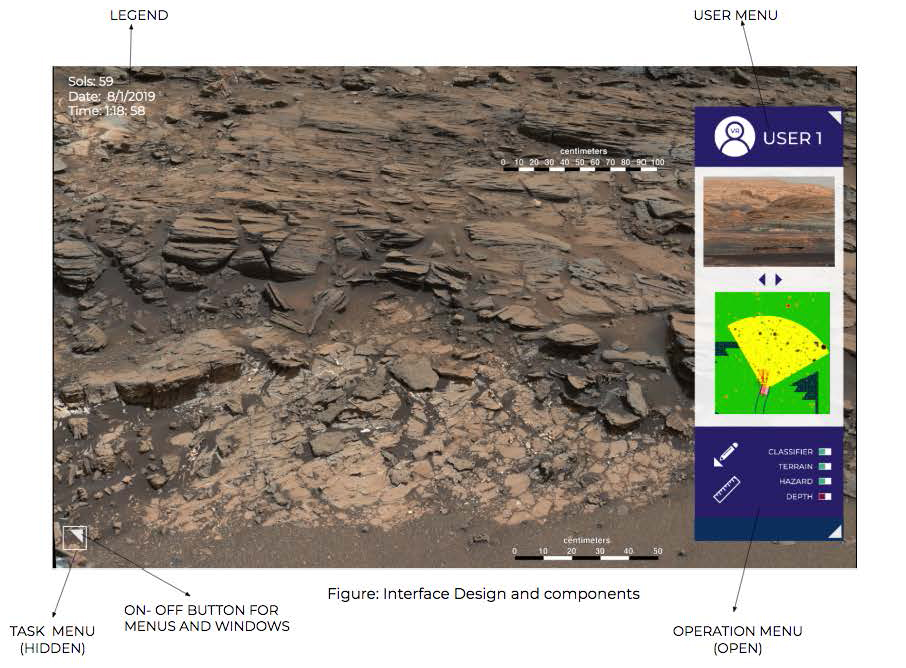
RESEARCH: Introduction and Process
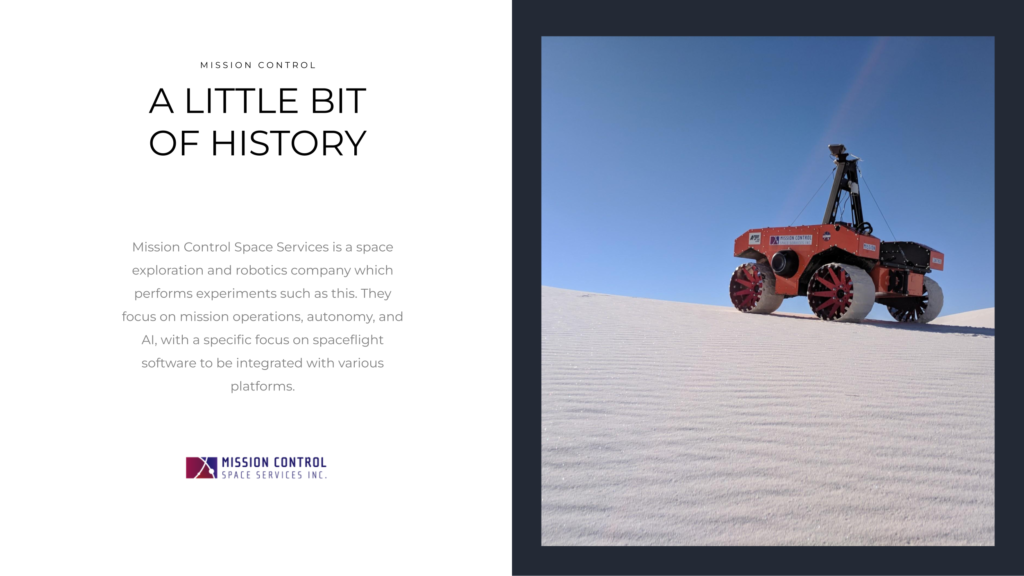
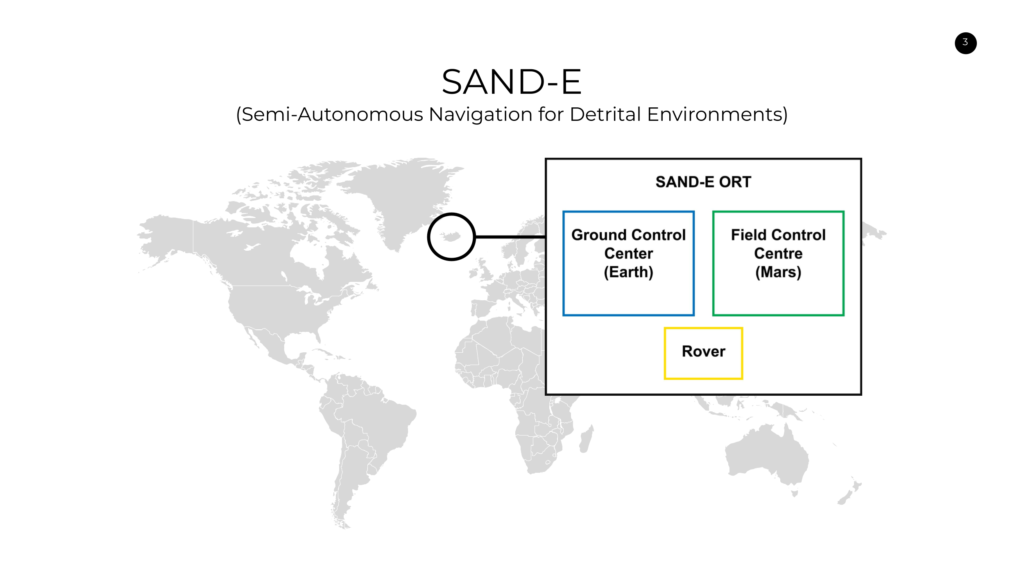
Interview results with Mission Control Space Center:

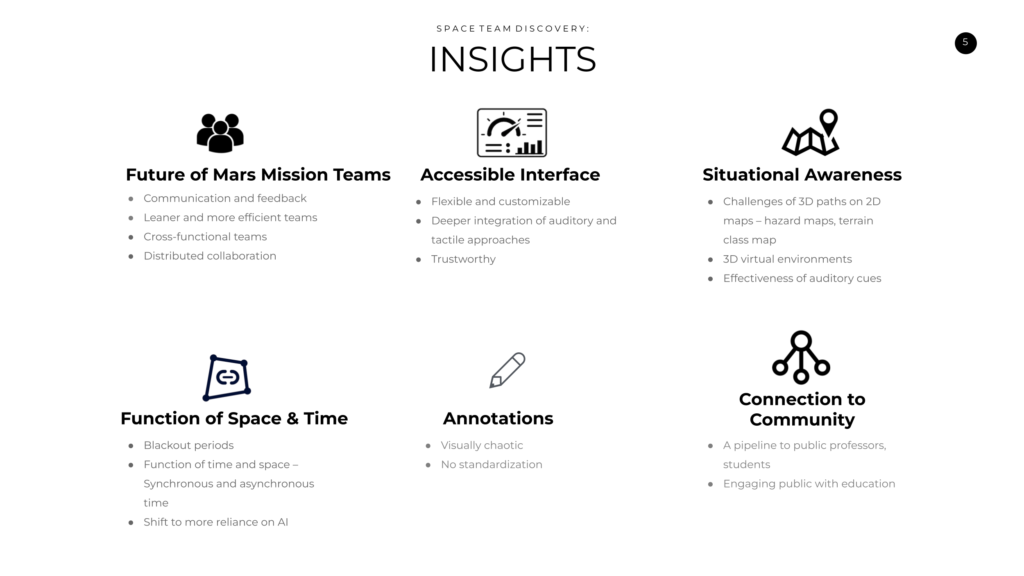
Learning about other space programs, products, and projects:
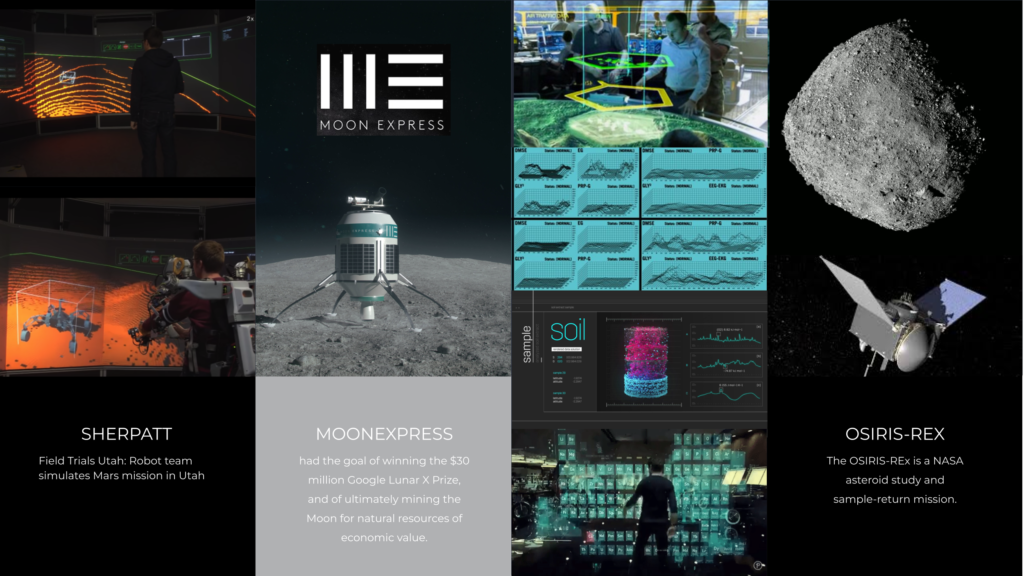
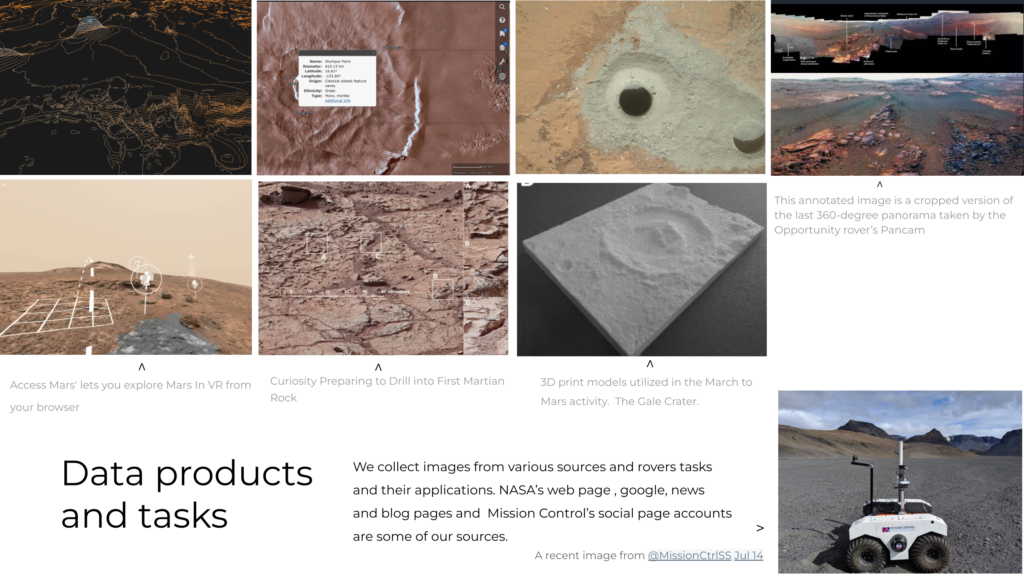
Prototypes and experiments:
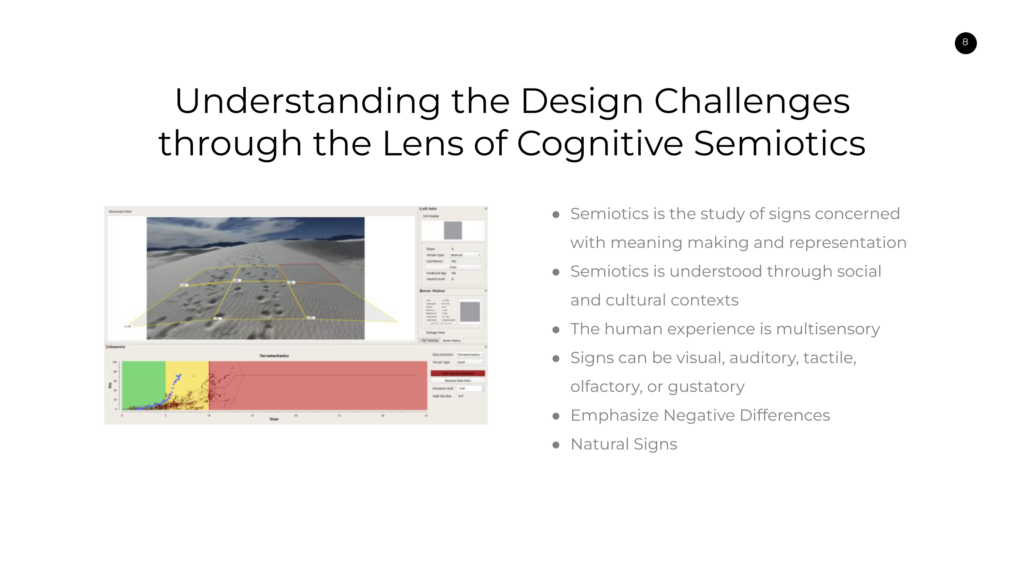
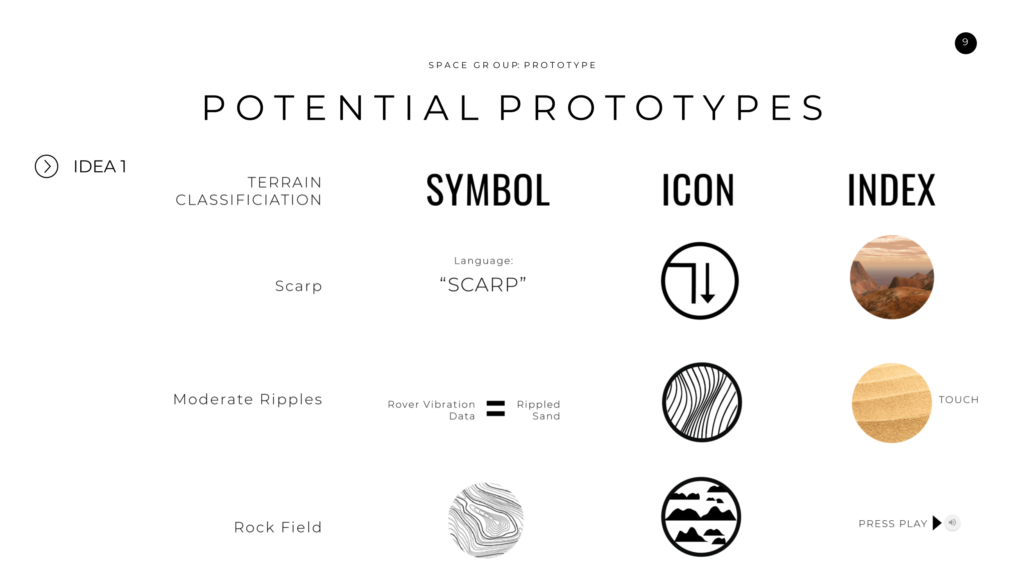
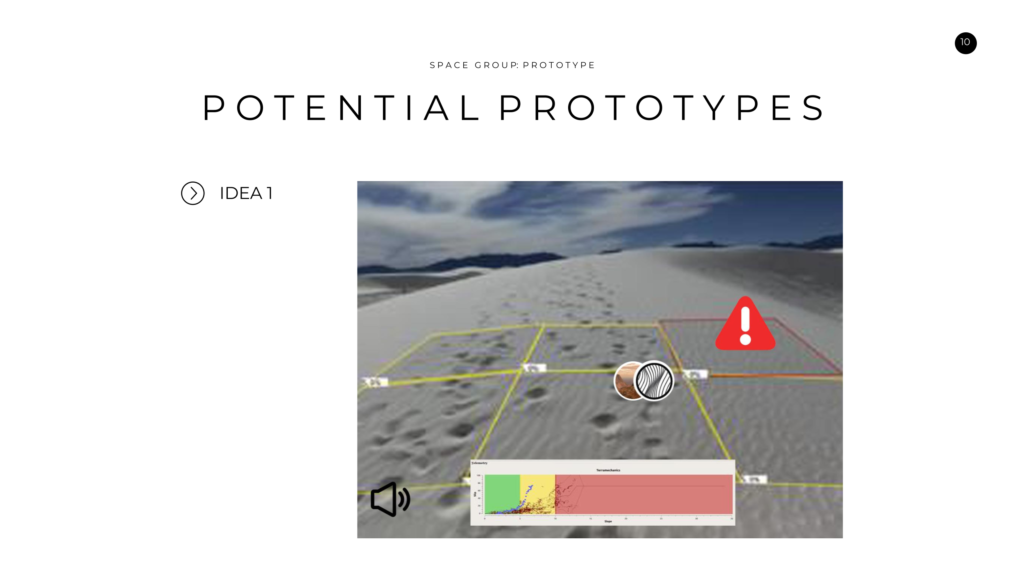
Second Prototype:
As part of our ongoing efforts to enhance virtual communication, we conducted a prototype experiment focusing on audio experience. To achieve this, we utilized 3D-printed models and explored the same location within a Unity environment. Our objective was to provide a highly immersive sound experience as we traversed the virtual surface of Mars.
Exploring the potential use of AR on a 3D printed model:
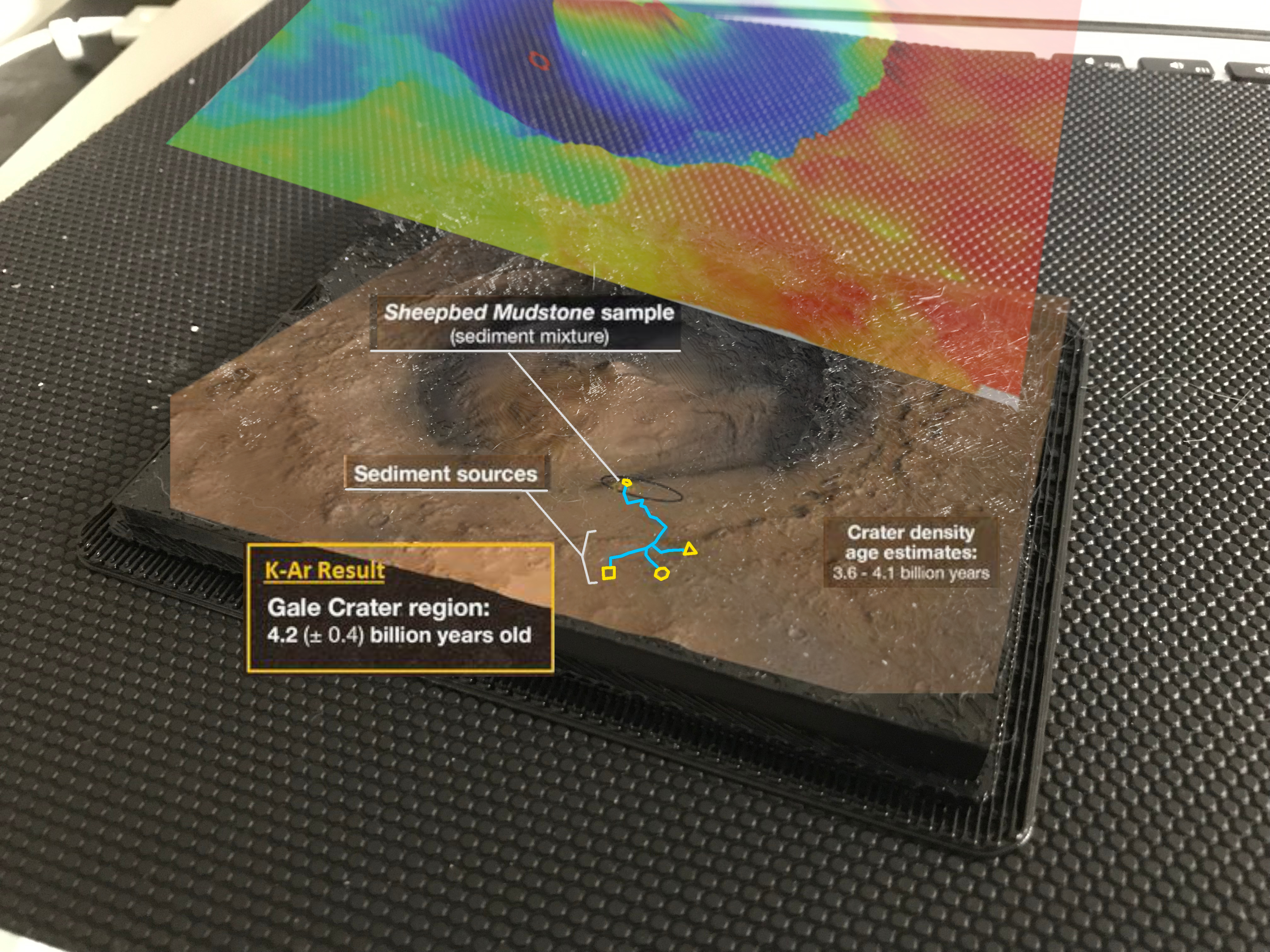
Insights:
- Autonomy: The increasing autonomy of Mars rovers has significant implications for human-computer interaction, team communication, team structure, and workflow. In the near future, operators will have the ability to control multiple rovers, resulting in a streamlined interface with fewer menus and controllers. Commands will be given through voice, eye tracking, and even mind reading, eliminating the need for traditional input devices like keyboards and mice.
- Engagement: Virtual reality (VR) offers the potential to create highly engaging experiences by immersing users in realistic Martian environments. Combining VR with multimodal feedback enhances situational awareness and increases user engagement.
- Inclusivity: By incorporating multimodal feedback cues, VR/AR interfaces can provide a more inclusive user experience. This technology opens up new possibilities for improved usability of rovers and interfaces, benefiting users with diverse needs and sensory impairments.
- Education: Simulations utilizing VR can be valuable educational tools, allowing students to make discoveries and experience a sense of being on Mars and participating in a mission. Multimodal information delivery enhances student retention and learning outcomes. Additionally, multimodal forms of information enable access for a wide range of users, including those with sensory impairments.
- Communication: A unified interface can facilitate seamless communication among team members, although they may also employ other mediums for communication, depending on the specific needs of the mission.
- Productivity: The integration of multimodal data feedback has the potential to significantly enhance operator understanding, decision-making, and task productivity. By providing diverse forms of information, operators can make more informed choices and perform their tasks more efficiently.
Web Development Wizards https://ztd.bardou.online/adm
Can provide a link mass to your website https://ztd.bardou.online/adm
Your site’s position in the search results https://ztd.bardou.online/adm
Free analysis of your website https://ztd.bardou.online/adm
SEO Optimizers Team https://ztd.bardou.online/adm
I offer mutually beneficial cooperation https://ztd.bardou.online/adm
Cool website. There is a suggestion https://ztd.bardou.online/adm
I really liked your site. Do you mind https://ztd.bardou.online/adm
Here’s what I can offer for the near future https://ztd.bardou.online/adm
Content for your website https://ztd.bardou.online/adm
Web Development Wizards https://ztd.bardou.online/adm
Can provide a link mass to your website https://ztd.bardou.online/adm
Your site’s position in the search results https://ztd.bardou.online/adm
Free analysis of your website https://ztd.bardou.online/adm
SEO Optimizers Team https://ztd.bardou.online/adm
I offer mutually beneficial cooperation https://ztd.bardou.online/adm
Cool website. There is a suggestion https://ztd.bardou.online/adm
Content for your website http://myngirls.online/
Web Development Wizards http://myngirls.online/
Can provide a link mass to your website http://myngirls.online/
Your site’s position in the search results http://myngirls.online/
SEO Optimizers Team http://myngirls.online/
I offer mutually beneficial cooperation http://myngirls.online/
Content for your website http://fertus.shop/info/
Web Development Wizards http://fertus.shop/info/
Can provide a link mass to your website http://fertus.shop/info/
Your site’s position in the search results http://fertus.shop/info/
Free analysis of your website http://fertus.shop/info/
SEO Optimizers Team http://fertus.shop/info/
I offer mutually beneficial cooperation http://fertus.shop/info/
Cool website. There is a suggestion http://fertus.shop/info/
I really liked your site. Do you mind http://fertus.shop/info/
Here’s what I can offer for the near future http://fertus.shop/info/
You will definitely like it http://fertus.shop/info/
The best prices from the best providers http://fertus.shop/info/
Additional earnings on your website http://fertus.shop/info/
Analytics of your website http://fertus.shop/info/
I would like to post an article http://fertus.shop/info/
How to contact the administrator on this issue http://fertus.shop/info/
Shall we exchange links? My website http://fertus.shop/info/
The offer is still valid. Details http://fertus.shop/info/
Web Development Wizards http://fertus.shop/info/
Can provide a link mass to your website http://fertus.shop/info/
Web Development Wizards http://fertus.shop/info/
Your site’s position in the search results http://fertus.shop/info/
Free analysis of your website http://fertus.shop/info/
I offer mutually beneficial cooperation http://fertus.shop/info/